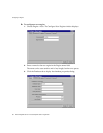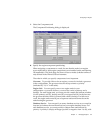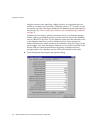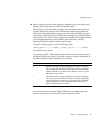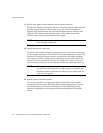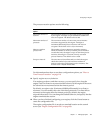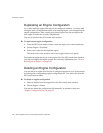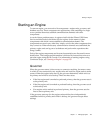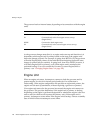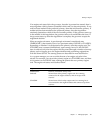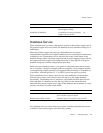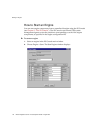
Configuring an Engine
Chapter 4 Managing Engines 103
The process execution options are the following:
For information about how to use these configuration options, see “How to
Tune Process Execution” on page 116.
14. Specify engine recovery behavior.
If an engine goes down, and then recovers, you can specify how long the
engine waits for clients to reconnect and the behavior of the engine in the event
the client does not reconnect before the timeout period.
By default, an engine waits 10 minutes (600000 milliseconds) for a client to
reconnect. You can modify this value from the Options tab. If a client fails to
reconnect to the engine after the timeout period, by default, the engine
suspends the session. You can change the default behavior, and specify that the
engine terminates the session.
15. When you have finished configuring your engine, click the Create button to
create the configuration file.
The engine configuration file is saved to a standard location on the central
server (see “Engine Configuration File” on page 90).
Process Execution
Option
Description
Maximum number of
sessions
The maximum number of concurrent sessions supported
by the engine. Attempts to open additional sessions will
raise an exception. The default value is 300.
Maximum number of
processes
The maximum number of concurrent process instance
executions supported by the engine. Attempts to
instantiate additional process instances will raise an
exception. The default value is 0 (no maximum)
Memory-resident
process limit
The number of process instances retained in memory.
When the number of memory-resident process instances
exceeds this limit, the engine swaps out dormant process
instances, allowing for execution of newly activated
process instances. The default value is 1000.
Swap-out interval The time interval (in milliseconds) at which the engine
checks the number of process instances resident in
memory and swaps out dormant process instances. The
default value is 10,000 milliseconds.




